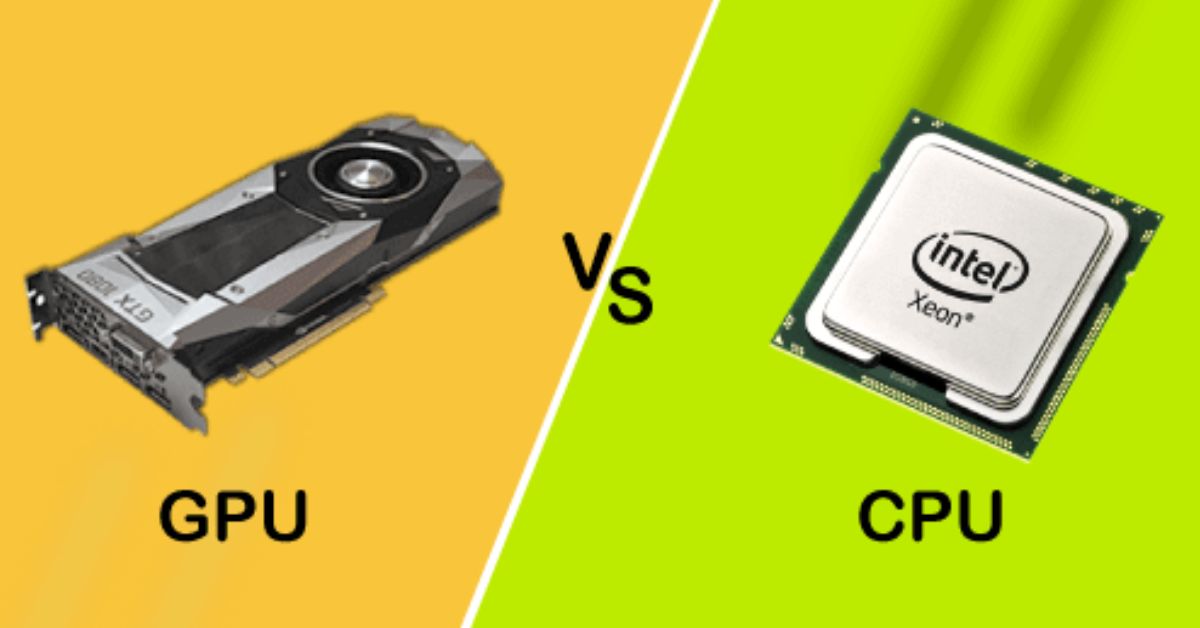In today’s computing landscape, two titans stand atop the mountain: GPUs and CPUs. They can be mentioned in the same breath, but they have rather different roles in the sphere of computing.
What is a CPU?
The CPU is said to be the “brain” of a computer, designed to execute complicated tasks step-by-step. The CPU executes commands, interprets code, and controls operations of the system. Due to its very flexible architecture, the CPU thus provides smooth operation to devices.
What are GPUs?
Now, GPUs get the most performance out of parallel processing. They tend to perform tasks that require concurrent calculations, such as rendering high-resolution images or playing games and deep learning applications. Once they were only useful in niche roles, now they play a crucial role in steering the future of computing.
Why Compare GPUs vs. CPUs?
It is important to understand the differences between the two in order to make the right choice of hardware for certain workloads, including general gaming, scientific research, or general productivity. Both have strengths to them, and harmonious working often determines the success of modern systems.
How CPUs Work
The Architecture of a CPU
The CPUs are optimized only around a few cores which execute sequential instructions with remarkable accuracy. Every core aims at maximizing the performance of individual tasks by being optimized with the help of a high clock speed. The advanced CPUs also feature hyper-threading for simulating additional cores that can help in better multitasking performance.
Core Performance of the CPUs
The primary function of a CPU is to carry out instructions from the operating system and applications. It controls arithmetic operations, logical operations, and systems’ memory.
Tasks Suitable for CPUs
The kind of work that best fits into the nature of work that CPUs need to execute requires linear process executions such as web browsing, running spreadsheets, or managing databases. For general-purpose computing, because they can switch between tasks very fluidly, they are irreplaceable.
How do GPUs Work?
GPU Architecture Primer
Whereas the CPU has thousands of smaller, specialized cores optimized for parallel processing, a GPU can quickly perform multiple calculations at the same time, which greatly accelerates computationally intensive tasks.
Parallel Processing Ability
The architecture of a GPU is built to handle vast blocks of data in parallel. Such scenarios include rendering large, complex 3D environments or training deep learning algorithms where many computations need to be carried out in parallel simultaneously.
Tasks suitable for execution on the GPU.
A GPU holds its own in such areas as doing graphics rendering and powering AI applications, or running huge simulations. Raw power and large data management efficiency are qualities that make a very important tool in modern technology stacks.
Key Differences: GPU vs. CPU
Speed and Efficiency
CPUs perform well with single-threaded work and tasks requiring simultaneous single-cored performance, whereas a GPU outperforms them in parallel workloads. Overall, they yield more speedy results for tasks like training AI models and video rendering.
Power Consumption
Due to their high-performance architecture, GPUs tend to usually draw much more power. Comparatively, CPUs are more energy-conscious and are therefore better for devices with long battery life or even lower power consumption.
Application in Computing
From AI to gaming, there are some domains where GPUs and CPUs excel differently. Generally, GPUs have a comprehensive lead in graphical and AI applications, whereas the role of the CPU still remains core for all fundamental computing operations.
Performance in AI and Big Data
Why GPUs Dominate AI Tasks
The parallelism by GPUs especially makes it very valuable in the training of neural networks and matrix operations that are critical for AI. In this regard, the advantage of speed enables more iterations in less time.
Role of CPUs in Data Preprocessing While GPUs have taken centre stage in AI, the role of CPUs cannot be underplayed while talking about data preprocessing, loading data sets, and file systems that ensure the smooth running of a pipeline.
Using a combination of GPUs and CPUs in Data Science
Modern AI systems normally fuse the best strengths of both GPUs and CPUs. While the former takes computationally intense jobs, the latter handles orchestration and integration.
Frequently Asked Questions on GPUs vs. CPUs
What are the fundamental differences between GPUs and CPUs?
GPUs do a good job of running parallel tasks, but CPUs run tasks sequentially. While GPUs are designed to push graphical and AI-based loads, the CPUs are general-purpose processors.
Can a GPU replace a CPU in a computer?
No. The work of a GPU should always be to assist the CPU and not to substitute it. A CPU has to run the operating system and perform the usual system operations.
Why are GPUs more expensive than CPUs?
GCMs are much more expensive compared to CPUs because of the complex technology and special architecture required to execute high-performance tasks.
What should I use for gaming between a GPU and a CPU?
Both can be important, but a fast GPU tends to take precedence for gaming since it has a more immediate impact on graphic performance.
Are GPUs really only used for gaming?
No. GPUs have applications in AI, scientific simulation, video rendering, and even cryptocurrency mining.
How do I prioritize a GPU or CPU upgrade?
Evaluate your workload. Choose a CPU, if you need better multitasking and system management. If you want a GPU that will do graphics-intensive or parallel-processing tasks, then choose that one.
Conclusion
Further, still relating to these two major players, the GPUs and CPUs, their relationship is one of collaboration and complementarity. Each has some distinct strengths, and it is through their combined strength that modern computing would be driven. In the future of evolving technology, the distinction between these two components will further blur to usher in an age of unprecedented computational power.
